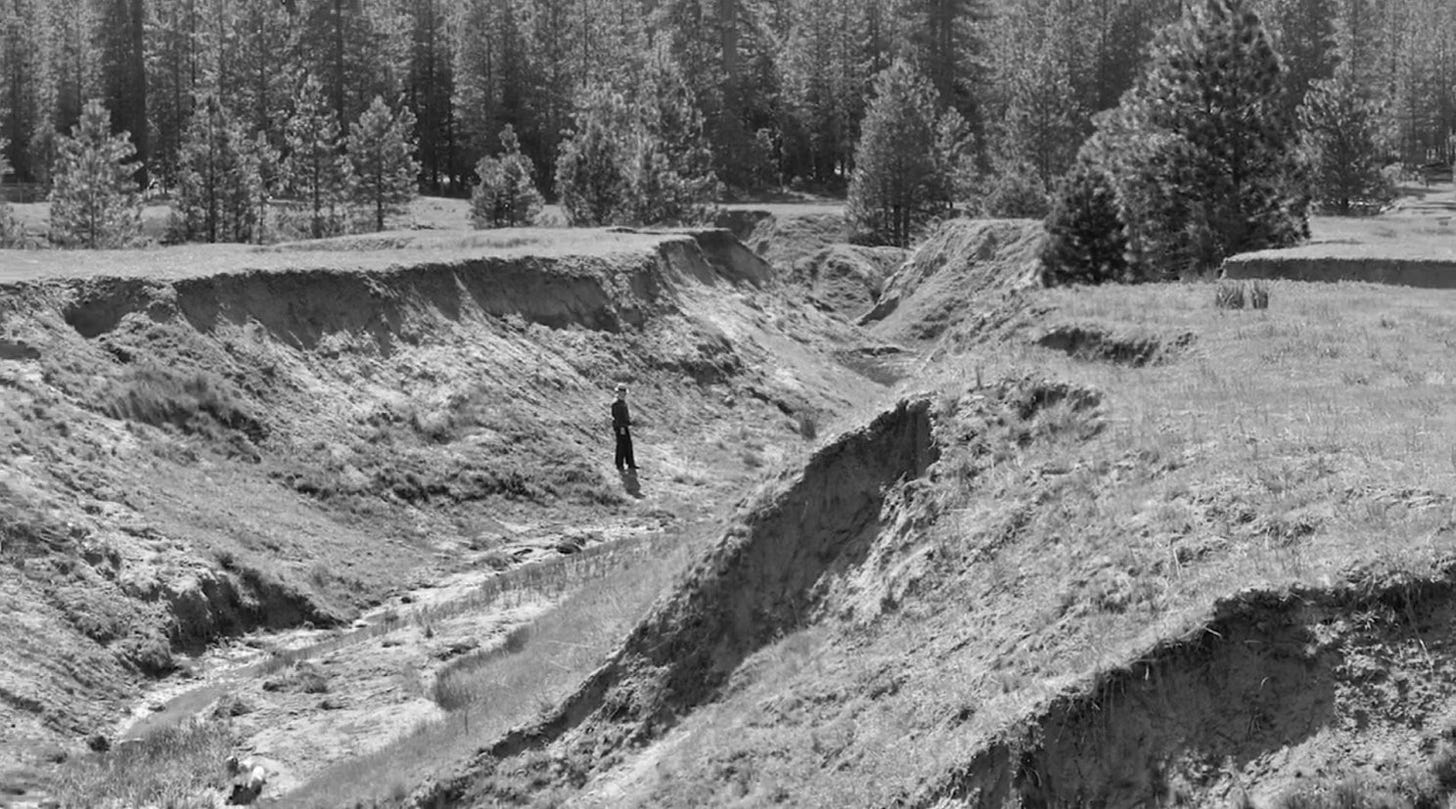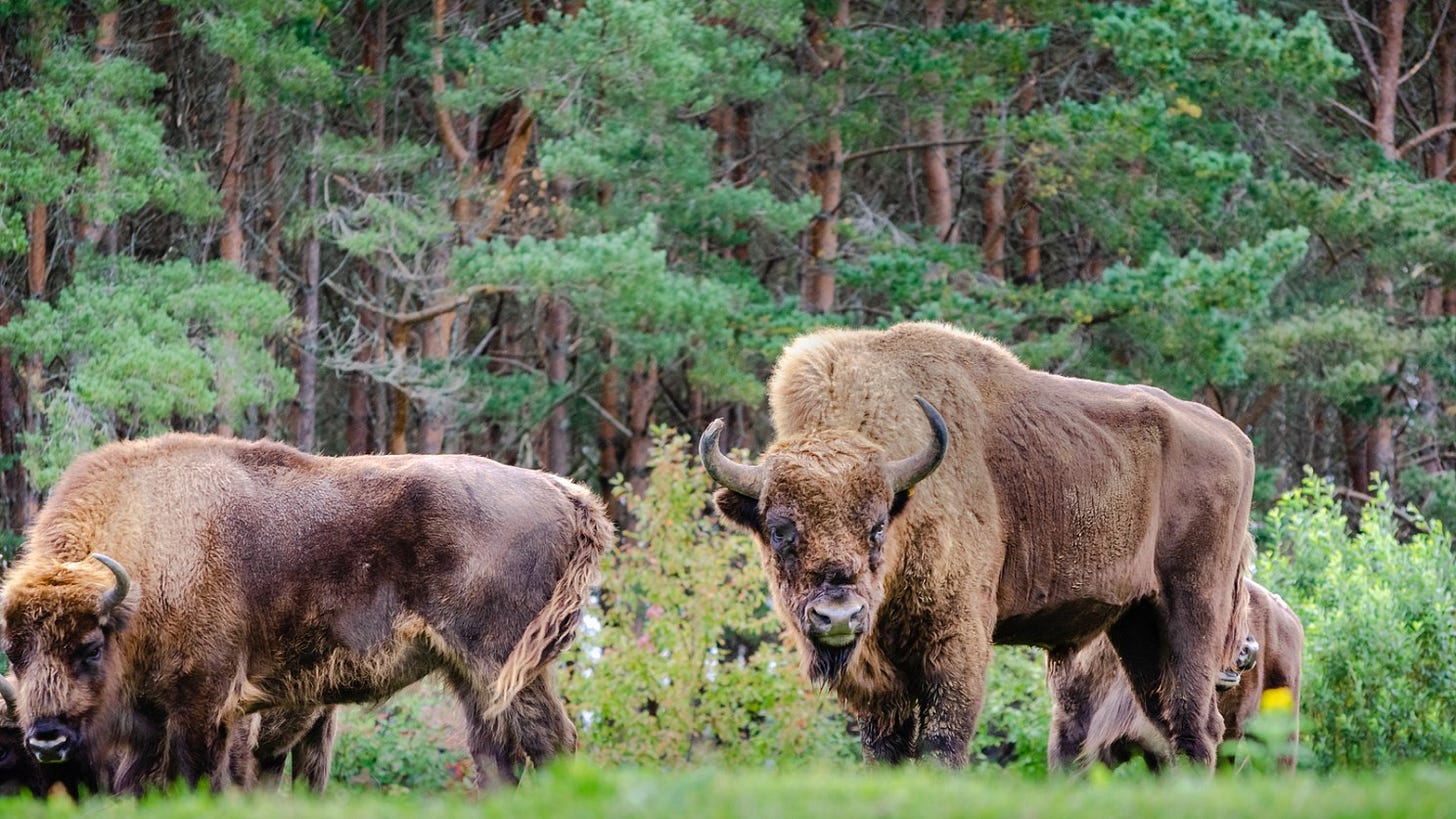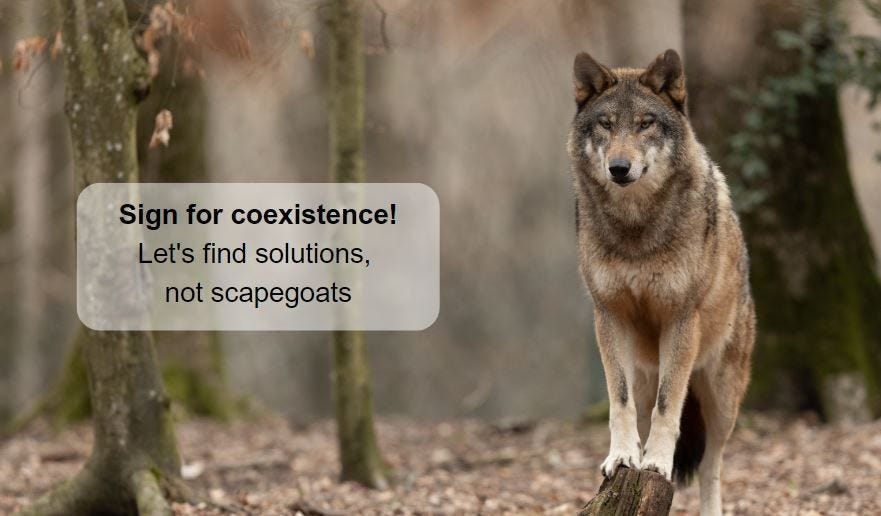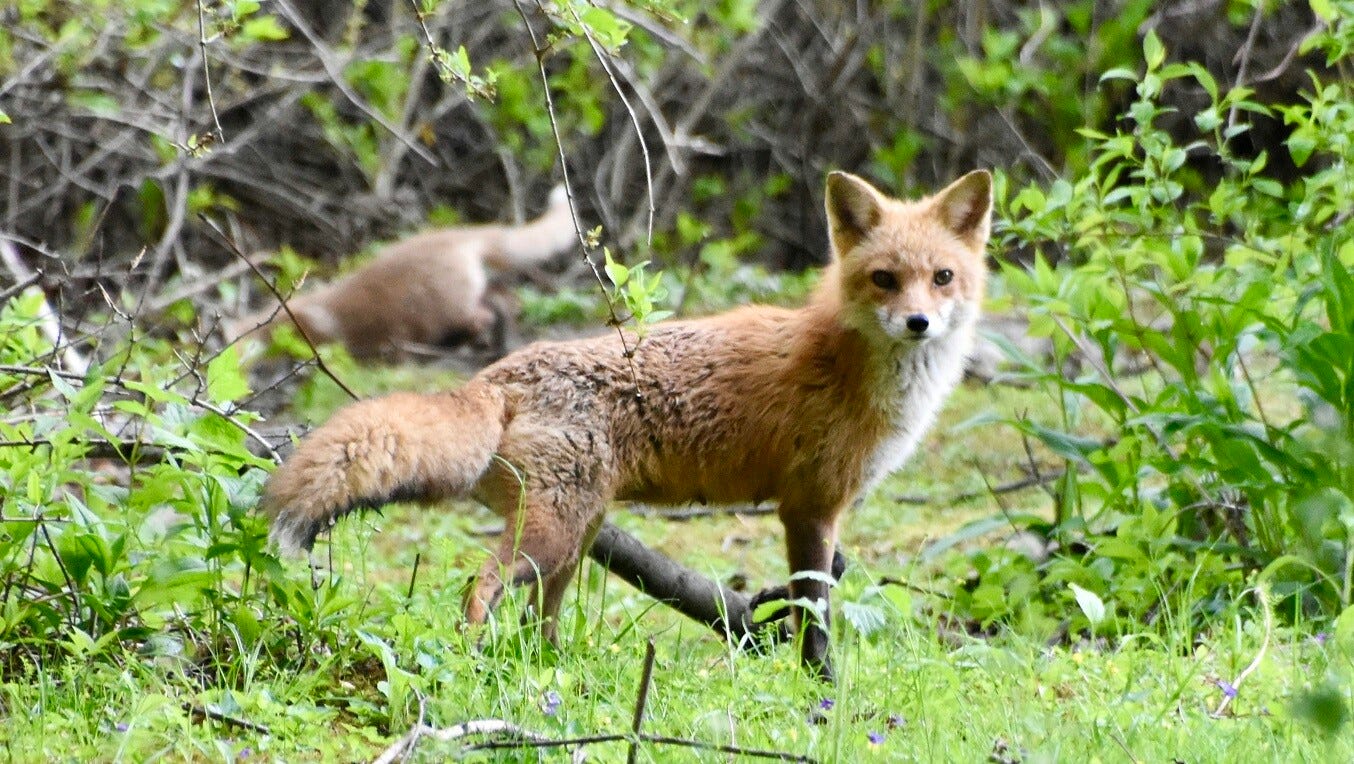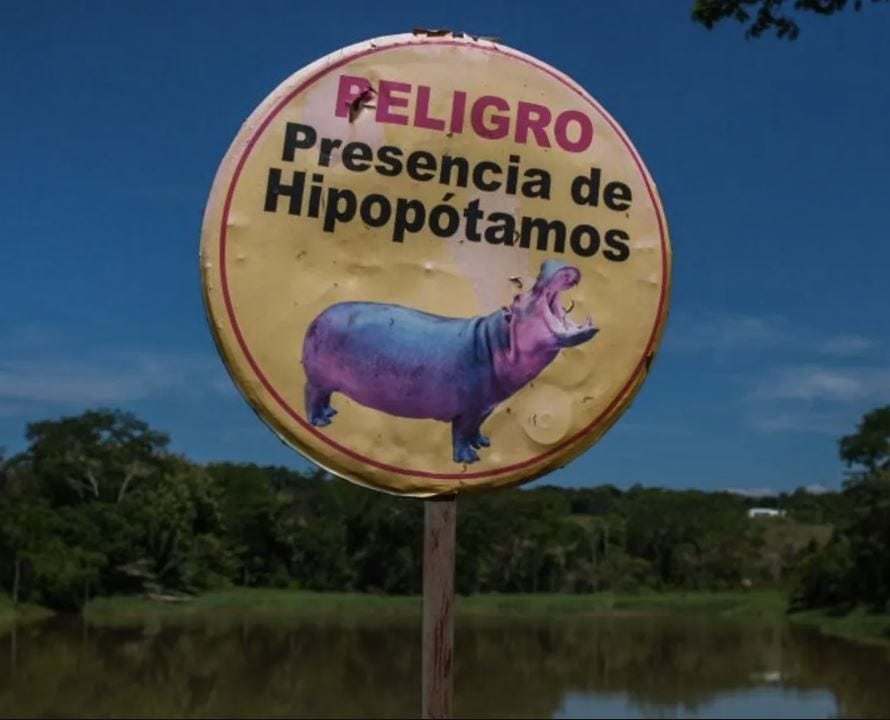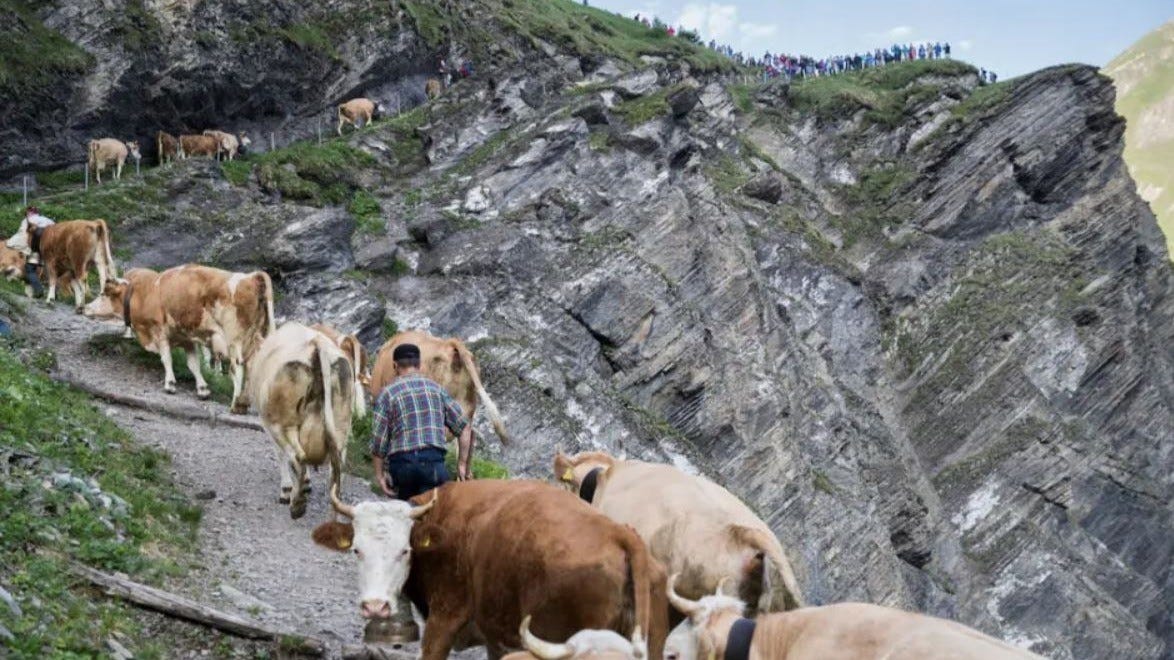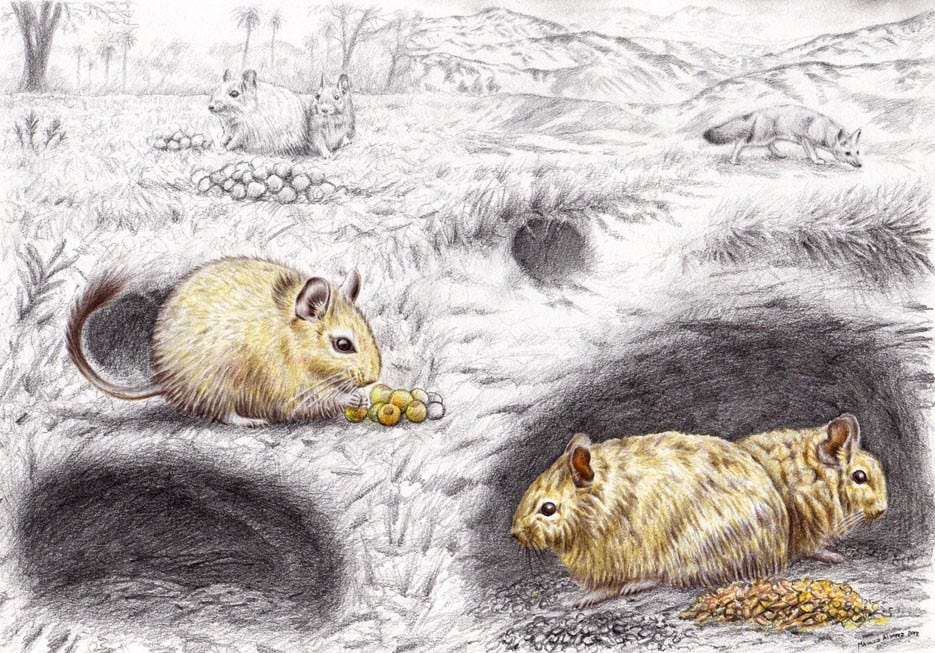Welcome to the latest edition of the Rewilder Weekly!
Before we jump into this week's eight stories - a quick shout-out to SCOTLAND: The Big Picture for what must have been an amazing rewilding conference. Love the pictures and posts I've seen - like this one from Trees for Life and this one from Sara King and this one from Peter Cairns. A beautiful quote by Rewild Podcast host James Shooter, "It's time for Scotland to welcome the wild back in and to focus on co-prosperity, not just co-existence."
Now then, let's get on with it - let's rewild!
👉 As a reminder: If you come across stories you'd like to see featured in an upcoming edition of the Rewilder Weekly, send them to me and I'll gladly do what I can.
1) How to restore a wetland - a great story of active rewilding
When it comes to rewilding, there's essentially two paths. Passive rewilding is about simply stepping back and allowing nature to take its course. More often than not, unfortunately, our lovely species has harmed flora and fauna to such a degree that active rewilding is a must. For nature to have a chance to restore itself to former glory, rewilders must first step in and undo damage. The Ackerson Meadow in the Yosemite National Park provides an excellent example.
The farm had operated for 150 years and no one there had meant to harm the land. They had simply done what farmers had always done. Cattle had grazed, trees had been felled, roads had been built. But little by little that work created creeks that grow long and deep - and these gullies eventually funneled all water from what had been an important wetland. The restoration efforts are gargantuan - quite amazing to see what happens.
👉 Go here for post, articles and video
2) More European bison join the wild herd in the Carpathians
So cool. Rewilding Europe's Frans Schepers shares a video where, in the middle of the night, the latest batch of European bison leave their enclosure to join the growing herd in the Southern Carpathians. This 'growing herd' is over 200 strong by now, and it all started with a rewilding effort ten years ago. As always - give nature just a bit of time, and it'll work wonders!
Frans explains how integration of new bison arrivals works: "After arrival, the animals spend a minimum of 21 days in the 16-hectare acclimatization enclosure, where they are closely monitored by the rangers from Rewilding Romania and WWF-Romania and veterinarians to ensure a smooth transition. The rangers opened the gates during the day." The new arrivals took their time - at night they casually meandered through the opened gates. Watch it, it's beautiful to see these peaceful giants going entirely free.
3) Add your voice to protect the wolf across Europe
Euractiv reports that "EU countries struggle to reach a majority to lower wolf protection status. Member state representatives in a Council working group on Wednesday (11 September) failed to secure a majority for the Commission’s proposal to downgrade the protection status of wolves under the Bern Convention. Brussels has just two weeks to propose changes before the deadline set by the Bern Convention, which meets in early December, expires.
In this new article, The Guardian asks "Europe saved its predators from the brink of extinction. So why is it killing thousands of bears, wolves and lynx?" If you don't know about the dire state of things with regard to large predators in Europe, then please read the article and please sign the petition that urges the EU's environment ministers to uphold the current conservation status of these animals that are essential for nature to recover to a biodiversity-rich state. The goal is 500'000 signatures - and over 291'000 have already signed.
👉 Go here for post and petition
4) Fanboy (and BBC) goes off on large grazers
Well, if you know me, then you know by now that I have a thing for large herbivores. In a recent article, the BBC looks at water buffalos around the world. They explain that water buffalo "can be broadly divided into river buffalo, which are common in India, the Middle East and Eastern Europe, and smaller swamp buffalo, found across Bangladesh, China and Southeast Asia." The water buffalo - just as other large grazers - acts as an ecosystem engineer by simply being there, by grazing, feeding, wallowing, meandering, trampling - and pooping (seeding) of course.
The excellent article goes further and looks at feral water buffalo and how they help the environments they're in. Unsurprisingly, rewilders see and 'employ' them as powerful allies, just as are other large grazers. Check out the article and hear from Rewilding Britain's Sara King and how they - and other large grazers - help Rewilding Danube Delta restore ecosystems.
👉 Go here for post and article
5) The UK government hasn't granted 11 trail hunting licenses
Biodiversity-rich nature requires of the human species respect for other species and thus a clear willingness to always aim for peaceful co-existence. When we stop disrupting as we've so carelessly done in the past, nature can and will recover. RSPCA reports that the the government hasn't granted any of the 11 requested trail hunting licenses on Ministry of Defence land.
Why is this important? The RSPCA explains, "Trail hunting is often used as a smokescreen for illegal hunting, and the Ministry of Defence owns 343,600 hectares of land in the UK, making this a huge win for animals!" Good news for foxes and badgers and other critters whose scent would inevitably be caught by hounds. Good news also because clearly there are people in the government who don't have career as their top priority, but instead empathy, kindness - and basic common sense.
👉 Go here for post and article
6) Not every invasive species is necessarily bad
You've likely heard of the odyssey of drug lord Pablo Escobar's hippos in Colombia. When his reign violently ended, his hacienda was ransacked ... and most animals in his lavishly exotic zoo were shipped to various proper zoos ... but no one felt like going anywhere near the imposing hippos - and so they were left to their own devices and felt wonderfully at home in Colombia's humid climate and lush rivers. Those initial 4 got along just fine and today, thirty years later, there are over 160 of them!
It's a fascinating tale of ups and downs and uncertainties of what to do. Kill them or leave them be? After all, they are tourist attractions now. Or castrate males? Or maybe just completely go with nature's flow? Yes, these hippos were imported by Escobar - but as Professor Jens-Christian Svenning and colleagues have researched, some non-native species may very well contribute ecosystem services once provided by large herbivores long gone extinct. Make sure you also read Svenning's comments in the post!
👉 Go here for post, articles and research
7) How the world was created: a wolf story
As the insane persecution of the wolf continues, I thought I'd share a story for a different perspective. Much of the fearmongering with wolves goes back to fairy tales and ancient legends. Yes, the wolf is the proverbial 'big bad wolf' in some of them - but in others he is serene, courageous, helpful, wise - a guide, a brother, even a god. So for a bit of balance - let this wolf sink in.
The Native American tribe of the Northern Paiute people knew wolf to be the creator. And on long winter nights the story of the creation of the world was told. I brought some of the tales of the Northern and Southern Paiute tribes into my last novel to give a sense of the richness of joy, imagination, beauty and belief of American Indian culture.
👉 Go here for the story of how wolf created the world
8) Alpine pastures - let's do it E. O. Wilson-style
I've been tearing my hair out because of both the farming and hunting lobbies' pretty blatant refusal to even contemplate coexistence measures with the wolf population in Switzerland. Rather than going with scientifically and practically proven methods, they'd rather continue the government sanctioned slaughter of this keystone species that is so important for Switzerland's biodiversity-rich future.
So, since there's no positive forward movement on coexistence, I thought about separating those lobbies from the wolf with a crazy idea: namely that all the Alps above 2'000 meters above sea level should be designated national park regions. It's a fairly mad idea - but I've enjoyed researching into the world of transhumance and what such a super-sized national park might mean for all species (including ours, of course).
👉 Go here for post and article
We end the newsletter as always with an artwork by Chilean science illustrator and painter Mauricio Alvarez (mauricio_alvarez_art on Instagram): This time a rendering of the adorable and highly social degu (octodon degus).
And that's it for this edition! For more rewilding insights and stories from around the globe, use the #rewilding hashtag and follow people, organizations and groups that are as passionate about rewilding as you are.
Have a good week!
Cheers,
D







